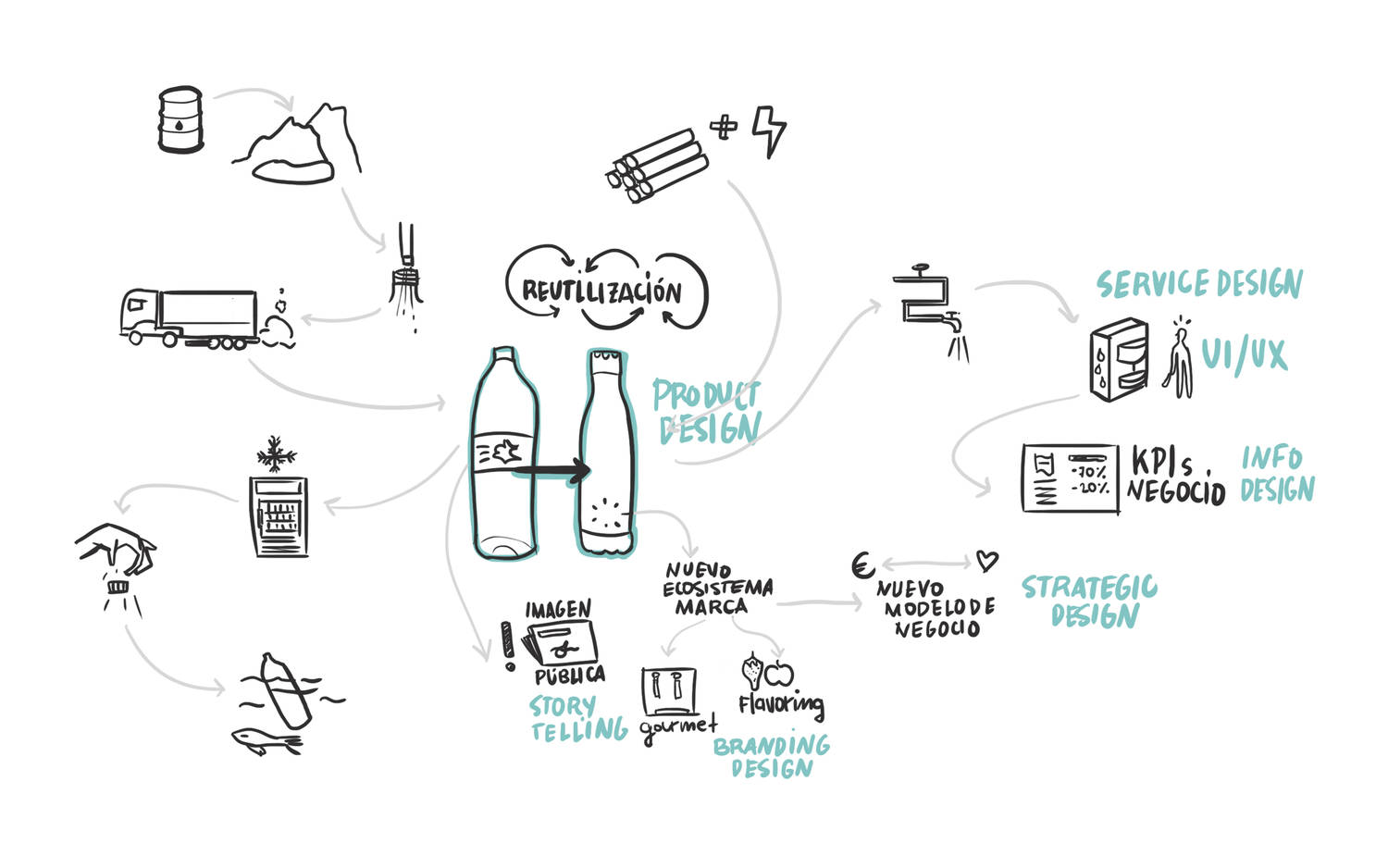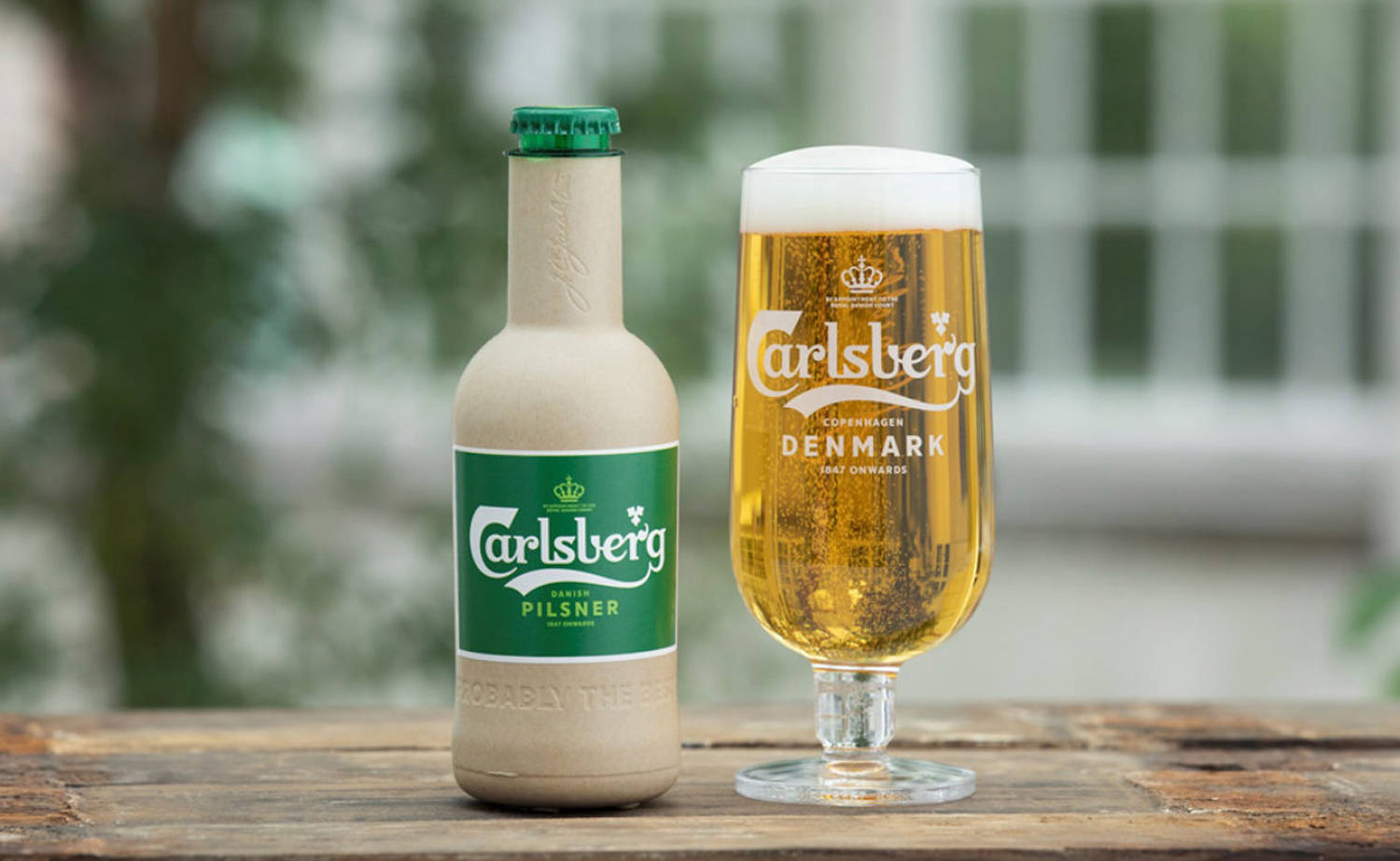As coordinators of the BAU Master’s Degree in Branding and Packaging, we at Batllegroup are acutely aware that sustainability is one of the most relevant design vectors to the consumer while, at the same time, one of the greatest challenges facing companies today. So, as both agency and educator, we seek to impact positively on society through sustainable, functional and attractive design that connects with the needs and expectations of people today.
Towards sustainable design
No more is sustainable packaging a pipedream… so brands today have no excuse. Where there’s a will there’s a way.
This post is written by Mariana Filipe and Markel Cormenzana of the strategic eco-innovation studio, Inèdit, and lecturers on the Master’s Degree Programme on Packaging Strategy and Design at BAU, Barcelona University Design Centre.

As production and consumption systems become increasingly complex, the rules of the game are likewise in constant flux. This means that, throughout the value chain, the role of design has to be constantly reassessed. From the very beginning of industrialisation, through to the digitisation of the economy and the globalisation of value chains, we have witnessed the transformation of the way organisations create and distribute value.

The signs of evident change include:
· The increasingly large number of categories and products available in a context of ever more global competition obliges organisations to become more efficient and seek greater differentiation.
· Value chains are becoming increasingly extensive, disperse and involve ever more agents. Thus, there is a greater need for coordination, integration and innovation.
· The relationship created between users and brands is ever more integrated and multi-channel and increasingly places the accent on the experience and 360º narratives.
· The person in the street is increasingly aware of the environmental and social crisis in which we find ourselves immersed, meaning that environmental attributes and messages are essential if our aim is to endure in today’s marketplace.
· Transparency is an essential requirement for the consumer, obliging companies to go beyond mere marketing claims when making known the nature and attributes of their products.
· The ever more broadly accepted and shared notion that a lineal, extractive and inefficient model of production is not compatible with seeking to satisfy the present and future needs of our society. The economic sustainability of an organisation depends entirely on finding business models suited to the needs of the future. The new ecosystem calls for different professional profiles with the sound capability to integrate from the micro to the macro perspective. This is also reflected in the world of design, where we see the dilution of the boundaries between disciplines and their reintegration to accommodate the physical and digital environments, the operational and strategic outlooks of corporations and, above all, the capacity to offer the end customer the most satisfying and sustainable service experience, as much in line with her/his values as possible.

The first beer bottle made of paper by Carlsberg

The Zero-waste Loop pilot with reusable packaging in New York and Paris

Lush's new carbon positive packaging

NotPla's biodegradable and edible packaging
In the case of packaging design, transformation is even swifter. Packaging is an element which crosses many different systems, such as, food, production or retail. That is why packaging design should bear in mind some of the most pressing challenges, such as:
· New plastics economy. This is one of the main focuses of the latest policies which restrict the use of certain materials, impose conditions on design and require specific forms of management for certain waste flows. With prevention as the strategic policy of preference, we find ourselves in a new regulatory framework, a key time, a logical result of the consequences of a lineal economy. Packaging design must display a knowledge of the current legal and strategic context and be able to offer packaging, packaging systems and even new product systems that meet both legal and consumer requirements while, at the same time, offering brands a new competitive edge.
· The challenge of food loss and waste. Packaging design represents an essential point of intervention in the battle against food loss and waste. Packaging should seek to resolve the unstable balance there is between the excessive generation of packaging waste, brought about by over-packaging, and the food waste caused by under-packaging. Possessing a solid grasp of life cycle is essential when seeking to generate solutions that achieve a positive environmental, economic and social balance.
· Packaging as the core touchpoint of brand experience. Much of the shopping experience, both retail (via brand positioning on store shelving) and online (via brand positioning through primary and secondary packaging) presents the pack as one of the first and main points of contact with the customer. Good packaging design should serve as an extension of brand experience and be an integral part of a holistic approach to service. Integrating this touchpoint as part of the brand and service experience requires differential design capabilities, a user-centred outlook and a toolkit aimed at facilitating such an approach and promoting two-way communication.
· Design for behaviour change. As a whole, the practices, habits and behaviour of the end-user broadly condition the performance of both the product and its packaging. Thus, the participation of the user is key to ensuring the proper use, separation and disposal of packaging. Such an outlook can indeed be incorporated into the package design itself in order to facilitate more desirable consumer behaviour. Integrating behavioural aspects into the design process is essential to fully capitalising on the efforts made to improve the sustainability of packaging. Contemporary packaging design, adapted to meet the needs of the future, must take into account this and other perspectives. It should be able to break through the traditional disciplinary divisions of design and integrate the design of services and experiences, design for behavioural change, graphic and communication design, product design, ecodesign and strategic design.
“Zooming from the meta to the matter is a core competency of strategic designers.”
Dan Hill - ‘Dark Matter and Trojan Horses’